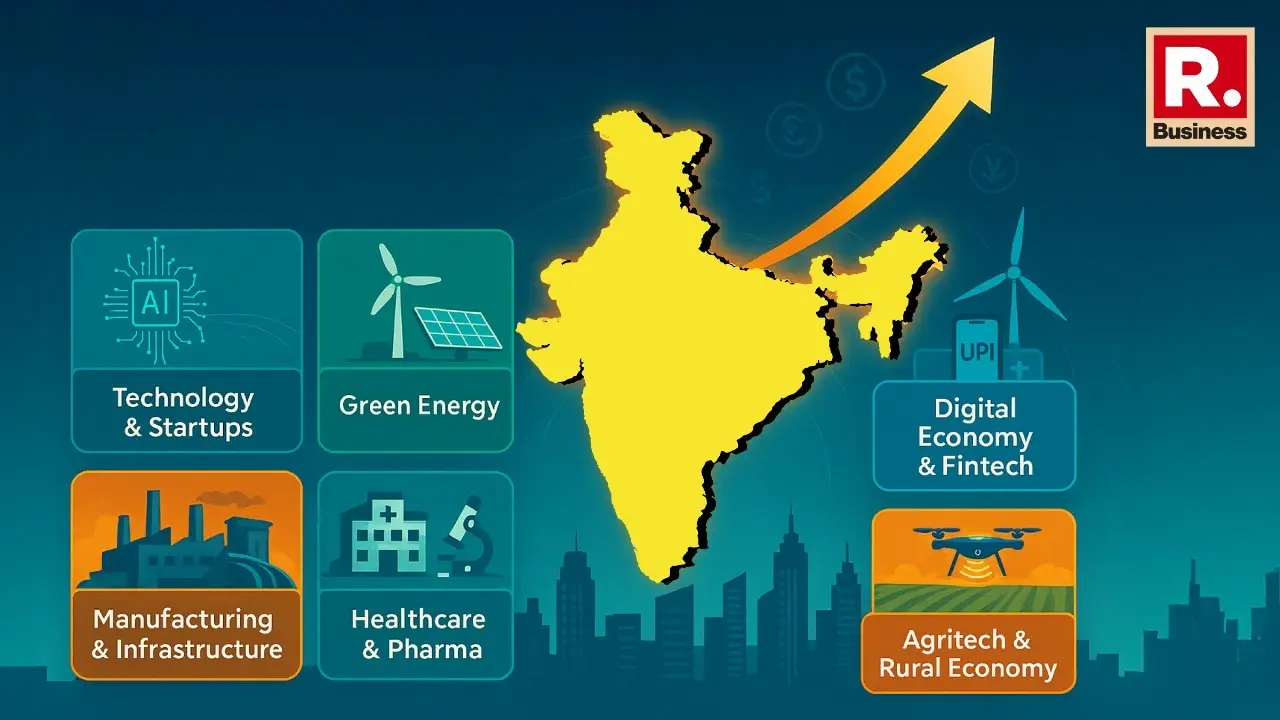Updated 25 May 2025 at 13:21 IST
India 4th Largest Economy: These are the Powerful Sectors Driving India’s Growth
The World Bank expects even stronger growth of 6.7 percent in both 2025–26 and 2026–27, well above the 2.7 percent average for the rest of the world. Here is the top sectors which drive the growth of India's economy to become 4th largest surpassing Japan.
- Republic Business
- 3 min read

New Delhi: India has officially overtaken Japan to become the world’s fourth-largest economy, crossing the USD 4 trillion mark as per International Monetary Fund (IMF) data. NITI Aayog CEO B.V.R. Subrahmanyam announced this landmark achievement during the 10th Governing Council Meeting on “Viksit Rajya for Viksit Bharat 2047" on Saturday.
The International Monetary Fund (IMF) projects that India’s economy will grow by 6.5 percent in the financial year 2025–26, making it the fastest-growing major economy globally. The World Bank expects even stronger growth of 6.7 percent in both 2025–26 and 2026–27, well above the 2.7 percent average for the rest of the world. Here is the top sectors which drive the growth of India's economy to become 4th largest surpassing Japan.
Electric Vehicles Drive Green Growth
One of the fastest moving sectors is electric vehicles (EVs). In 2023, EV sales in India jumped by nearly 50 percent, reaching 1.52 million units, according to the Society of Indian Automobile Manufacturers. Experts forecast the market will continue to grow at around 66 percent per year through 2025. The government’s FAME II scheme has set aside USD 1.43 billion to support EV makers and buyers, while the PM E-DRIVE scheme provides USD 96 million for setting up more charging stations. As of February 2024, India had over 12,000 public EV chargers, but industry groups say the country will need more than 1.3 million chargers by 2030 to keep up with demand.
Advertisement
Healthcare and Insurance Expand Rapidly
India’s healthcare industry is also booming. Analysts expect it to reach USD 320 billion by 2028 as people become more aware of health issues and spend more on private medical care. The Ayushman Bharat scheme provides free health insurance to millions of low-income families, raising coverage across the country. At the same time, the government’s Production Linked Incentive (PLI) programme is helping domestic drug manufacturers produce more generic medicines and key ingredients. In 2024, the sector’s earnings grew by over 21 percent, driven in part by telemedicine and online health services.
Renewable Energy Powers the Future
Renewable energy is another cornerstone of India’s growth story. The country aims to install 500 gigawatts of clean energy capacity by 2030. By the end of 2024, it had reached 209.45 GW, including solar, wind, and large hydro power. Foreign investors have put USD 15.36 billion into Indian renewables since 2000, and further investments of around USD 360 billion are expected by 2030. In the latest Union Budget, the government allocated USD 2.3 billion for rooftop solar projects and USD 72 million for its Green Hydrogen Mission.
Advertisement
With strong support from government policies and growing private investment, these three sectors—electric vehicles, healthcare & insurance, and renewable energy—are key engines driving India’s rapid ascent to the top ranks of the global economy.
Published By : Aditi Pandey
Published On: 25 May 2025 at 12:59 IST
